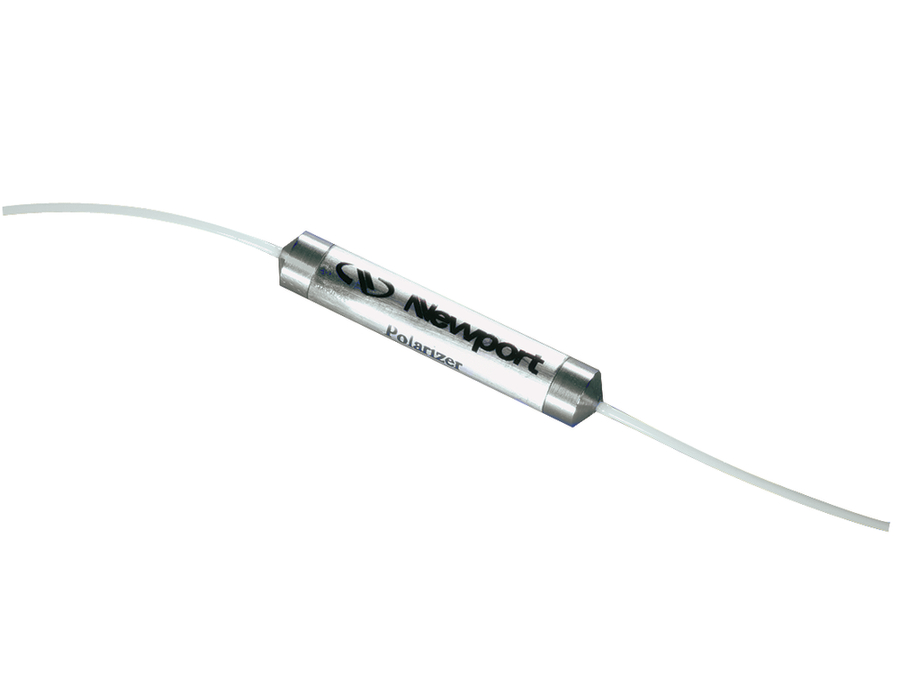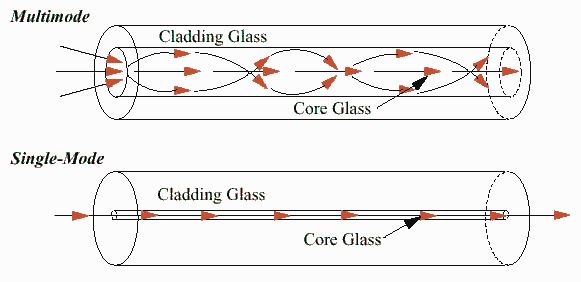
Fiber optic polarizers greatly improve the performance within many fiber transmission systems. Courtesy of GlobalSpec.
Introduction to Fiber Optic Polarizers
Fiber optics cables are a common and extremely efficient method for data transmission and light guiding applications. Complete fiber optic networks can transmit data over long distances at a wide bandwidth. This makes fibers an ideal technology for a wide range of applications in medical, networking, and military industries. While both polarized and unpolarized light can travel through optical fibers, unpolarized light travels with significant losses and distortions over large distances, which could be critically detrimental to the transmission of information via optical networks.
Fiber optic polarizers are one remedy to this overarching problem and extremely useful in providing the strongest and cleanest output signal. These devices are small pieces of cable placed in-line with fiber that are able to polarize incoming light. Polarization-controlled fibers produce outputs with maximum intensity and bandwidth without hindering velocity. In this blog post we will learn the basics of polarization in fiber optics and why fiber optic polarizers are the best option for high-speed transmission.
Review of Fiber Optics and Polarization

Single-mode and multimode fibers carry light differently, but they are both affected by polarization mode dispersion. Courtesy of AD-net.
Cable Types
Fiber cables can be single-mode or multimode. The number of modes tells us how light can propagate throughout the fiber. Single-mode fibers can only support a single propagation mode. While waves may contain different frequencies, they are all spatially distributed in the same way. Multimode fibers, however, have a much larger core diameter, allowing for higher light gathering capacity and more modes of propagation along the cable. While these fibers are simpler than the single mode, they are much more limited in bandwidth and travel distance.

The above graphic shows a basic example of birefringence through a material. Courtesy of Wikipedia Commons.
Birefringence and Polarization in Fibers
Birefringence is is the property within optical materials where the refractive index is dependent on the polarization direction of incoming light. This property is common in most nonlinear crystals and many optical fibers. Ideal fiber cores are perfectly circular, but in practice most fibers experience mechanical stresses due to bending or handling. Shifted geometry within the fiber core then causes polarization-mode distortion along the length of both single and multimode fibers. One polarization mode will then travel at a different space than the other.
How could this affect fiber performance? Lengthened pulses due to birefringence results in more noise and lower quality output light. Different polarizations of light can be absorbed to different degrees by materials. Control over polarization is essential to most optics applications because polarization of light affects the focus of laser beams, influences the cut-off wavelengths of filters, and can be important to prevent unwanted back reflections.
Factors to Consider
Insertion Loss- Inserting a fiber optic polarizer (or any optical component) into the system will inevitably cause attenuation. The best polarizers minimize the resultant loss.
Available Bandwidths- Different applications require different (or broader) bandwidths; it is important to choose the polarizer and fiber that matches the accommodates the desired output bandwidth.
Size– Most systems best benefit from smaller polarizers, simply because of constraints on available space. Smaller polarizers also typically prompt lower insertion loss.
Extinction Ratio- This ratio is likely the most important factor in choosing the best fiber optic polarizer for a given system. Extinction ratio gives the ratio of the transmission of the desired polarization to that of the undesired polarization. This factor is thereby the best indicator of quality for a polarizer.
Applications of Fiber Optic Polarizers
Fiber optic polarizers are an essential building block for fiber optic networks. These devices make it possible to standardize the inputs and outputs of light for simple construction with fiber couplers without free-space optics. They are therefore ideal in a wide variety of high-density data and measurement applications.
Fiber Amplifiers
While fiber optic polarizers can benefit most fiber systems, they are especially useful for amplification purposes. Doped fibers act as the gain medium in many solid state lasers. Here coherent light pumps the dopant to stimulate emission and then propagates through the fiber. This generation stage for optimal gain is usually polarization-dependent. Polarizers greatly reduce the effects of birefringence and polarization-mode dispersion, therefore allowing for greater amplification and stronger output signal.
Polarization Measurement
Because fiber optic polarizers work as a type of light filter, they are also very efficient in sensing and measurement. Fiber optic polarizers can tell the user a great deal of information about the light passing through and the fiber itself. Polarizers allow for polarization analyses, monitoring and control.
